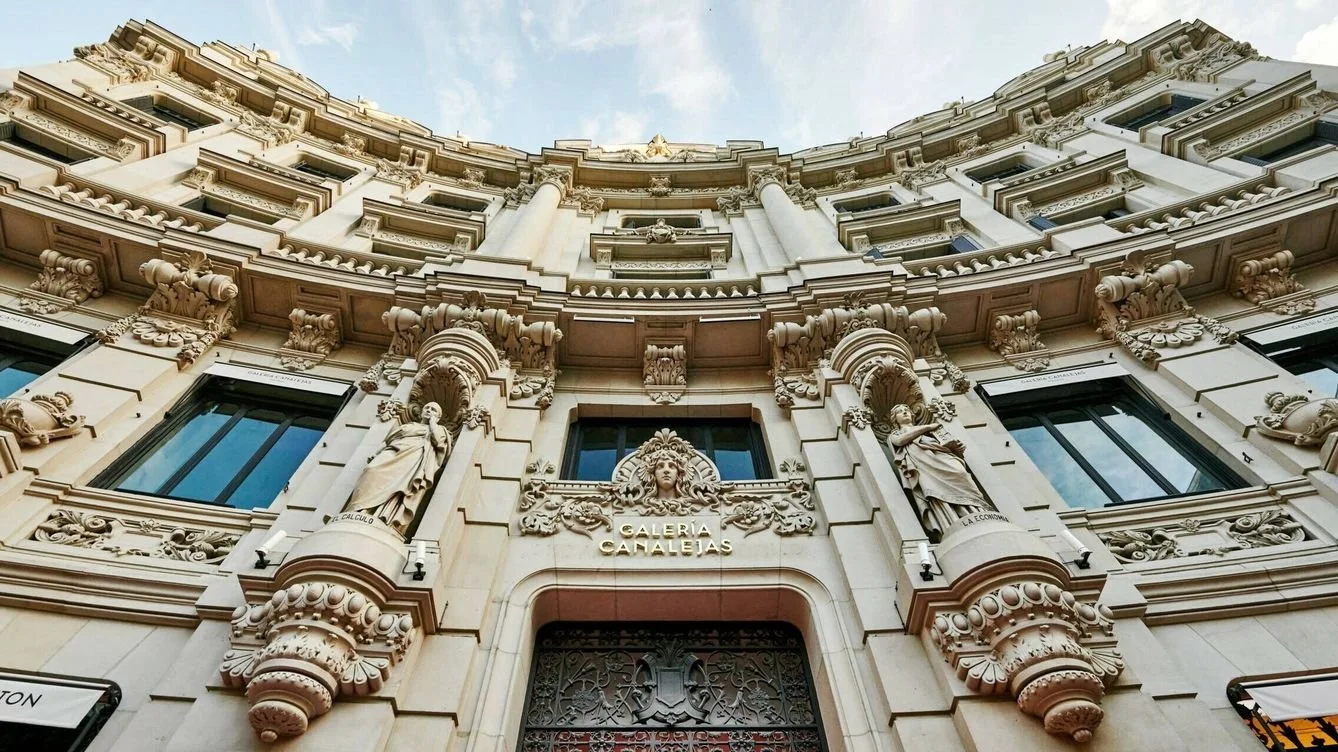The Bankruptcy of Galería Canalejas Food Hall: Unraveling the Failure of an Ambitious Project.
In recent years, the concept of "food halls" has experienced a remarkable rise in major global capitals, blending high-end gastronomy with a unique shopping experience. Madrid was no exception. One of the city's most ambitious ventures in this sector was the Food Hall at Galería Canalejas. Designed to become the new "place to be," an epicenter of luxury dining under the prestigious Four Seasons brand, it had everything needed for success. Yet, despite its promise, it has now succumbed to the harsh reality of bankruptcy. What led to this failure? Let’s analyze the key factors behind its downfall.
The Dream of Galería Canalejas
Galería Canalejas, strategically located near Madrid’s iconic Puerta del Sol, was envisioned as a beacon of luxury, marking a renaissance for high-end retail in Spain’s capital. With an investment of hundreds of millions of euros, the complex quickly became a prime European luxury destination, home to prestigious brands such as Cartier, Louis Vuitton, Dior, Hermès, Aquazzura, Giorgio Armani, Jil Sander, Jimmy Choo, Stefano Ricci, and Rolex. More than just a shopping experience, the project sought to introduce an exclusive culinary haven—an opulent Food Hall featuring top-tier gastronomic concepts.
At its launch, the Food Hall boasted 13 high-end dining spaces curated by Michelin-starred chefs, offering a diverse selection of global cuisines. The objective was clear: attract both international tourists and affluent locals eager for an unparalleled gourmet experience. On paper, it was a recipe for success. In reality, it fell apart.
The Reasons Behind the Failure
Several factors contributed to the downfall of Galería Canalejas' Food Hall. The most evident include:
1. The Pandemic’s Impact on Tourism
The COVID-19 pandemic devastated the hospitality industry worldwide. Although the Food Hall opened during a period of gradual tourism recovery, lingering travel restrictions and shifts in consumer behavior significantly hindered its profitability. The target audience—wealthy international visitors—did not return at the projected pace. Without a steady flow of high-spending tourists, the luxury dining establishments struggled to generate sustainable revenue.
2. Intense Competition in Madrid
Madrid has witnessed a gastronomic boom in recent years, with an influx of new fine-dining establishments and gourmet spaces. The city already had well-established culinary hotspots like Mercado de San Miguel, Platea, and the gourmet sections of El Corte Inglés. These competitors, which had long solidified their presence in the luxury food scene, successfully attracted the clientele that Galería Canalejas had hoped to capture, making it difficult for the Food Hall to carve out a distinct identity.
3. Exorbitant Pricing and a Disconnect with Locals
One of the most common criticisms of the Food Hall was its pricing. While positioned as a destination for gourmet experiences, many patrons found the costs unjustifiable relative to the quality and exclusivity offered. This alienated local diners and deterred a significant portion of tourists who sought premium dining options with better value.
4. Ineffective Marketing and Branding
Despite featuring renowned international chefs, the Food Hall failed to establish a strong brand identity in Madrid’s culinary scene. Unlike its competitors, which thrived on compelling storytelling and emotional engagement with their audience, the Canalejas Food Hall relied too heavily on the prestige of the Four Seasons brand. This approach neglected the need for a unique and authentic positioning, ultimately leaving it overshadowed and underappreciated by potential patrons.
Initially envisioned as a space for Michelin-level dining, the Food Hall concept evolved in 2022 with the inclusion of Mad Gourmets, a casual dining initiative introducing 20 street-food-style stalls. This shift diluted the exclusivity of the original concept, transforming the space into a high-priced, upscale food market rather than a refined culinary destination.
Surprisingly, even today, many Madrid residents and visitors remain unaware of the Food Hall’s existence, despite its prime location. The lack of visibility and engagement with the local audience further contributed to its struggles.
5. Perceived Exclusivity as a Barrier
Another significant issue was the perception of exclusivity. The presence of Four Seasons' security personnel and uniformed doormen—adorned in elegant Seseña capes—was meant to enhance the luxurious atmosphere. However, it unintentionally intimidated potential customers, making the space feel unwelcoming. Many passersby hesitated to enter, unsure whether they could afford to dine there.
6. Operational Challenges and Financial Struggles
Behind the scenes, various operational difficulties exacerbated the Food Hall’s problems. High maintenance costs, staffing shortages, and logistical inefficiencies strained profit margins. The main tenant, Mad Gourmets, ultimately declared voluntary bankruptcy, as published in the Official Gazette of the Mercantile Registry. The company, founded by Gonzalo Bugallal, accumulated over 2.23 million euros in debt, primarily due to insufficient foot traffic and unmanageable financial commitments.
7. Internal Disputes and Unstable Ownership
Adding to the turmoil, internal conflicts between the primary stakeholders—OHLA (a Spanish construction firm controlled by Mexico’s Amodio family) and Mohari Hospitality (founded by Israeli billionaire Mark Scheinberg, creator of PokerStars)—have further complicated matters. A legal dispute filed by OHLA at Madrid’s Mercantile Court No. 15 seeks to annul the partnership managing the Canalejas complex. At the same time, the property has been on the market for months, with an estimated sale price ranging from 800 million to 1 billion euros. OHLA’s fragile financial position has necessitated asset liquidations, casting further uncertainty over the future of the complex.
A Lesson for the Future
The failure of the Galería Canalejas Food Hall serves as a stark reminder that luxury alone does not guarantee success in the competitive world of gastronomy. This ill-fated venture highlights the crucial need for:
Robust financial planning
Agile adaptation to market shifts
Streamlined operational management
Strategic marketing and brand storytelling
A deep connection with both local and international audiences
The collapse of this space underscores the challenges facing the high-end dining sector in an ever-evolving market. Future projects must strike the right balance between exclusivity, accessibility, and authenticity. The culinary landscape has changed, and only those who can understand and adapt to the modern consumer’s expectations will thrive in Madrid’s demanding gastronomic scene.





